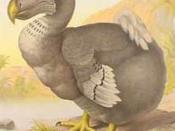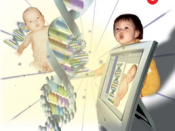Twenty years ago, scientists said that cloning was completely impossible. But now, the science of cloning has come to realization. Imagine meeting an exact replica of somebody. They look alike, think alike, and even have the same genetic makeup. No, this isn't an episode of Star Trek, this is reality. This is the new world of cloning, and thanks to a 7-month-old sheep named Dolly, a new science has been born. As with every new science, there are those who believe in it, and those who oppose it. The new technology of cloning should be utilized because it could bring back extinct organisms, help infertile couples to have children, and potentially save many lives. Cloning could bring back extinct animals. Over millions of years, thousands of different species have gone extinct. Most were due to "natural selection", while several others were due to human intervention. Predators, competitors, or diseases introduced by humans from continental areas are responsible for many of the extinctions.
Many remaining species on oceanic islands are threatened or endangered." With cloning, many of the animal species, and potentially several of the plant species could be brought back to life. Even though there is currently no technique for bringing the plants back, with technology advancing so quickly, we could have a solution quite soon. Cloning, though now limited to animal subjects, potentially has significant human applications.
Cloning will help a couple who would normally be unable to have children because one of them was infertile. Unfortunately, this method has a very low success rate. In the experiments with the sheep, 277 cells were attempted. Twenty-nine of those developed into embryos pregnant. And only one carried the pregnancy to full term and delivered a live lamb. However, with the ever-progressing technology, scientists will be able to...



Good job
Cloning is a very good thing, but the media has only show the negative image of it. It is this kind of ignorance that will stop us from new discoveries that will make life better.
1 out of 2 people found this comment useful.